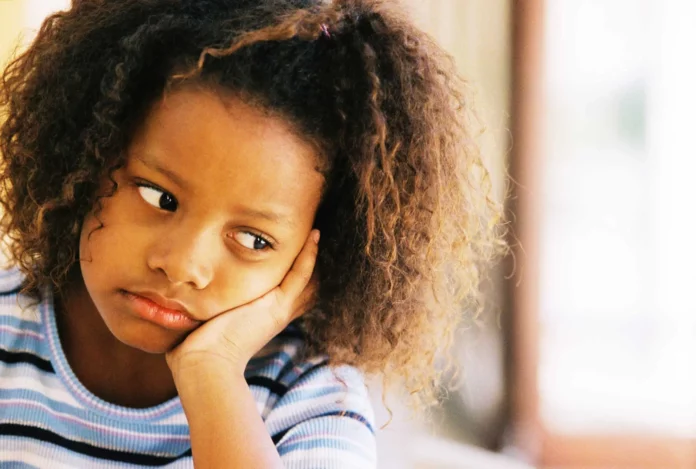A recent CDC study illustrates the tragic reality of childhood during COVID-19 Lockdowns. Global communities have been forced to take unprecedented measures in response to the pandemic. This is perhaps nowhere more apparent than in the lives of children struggling with school closures, social isolation, and even self-isolation.
With anxiety and depression on the rise among children, adults must provide the necessary support to make them feel safe.
During lockdowns, 44 percent of children were’sad and hopeless,’ and 19 percent contemplated suicide, according to a CDC study. Extremely alarming are these alarmingly high rates of emotional distress among children during lockdowns. The trauma that children are experiencing as a result of the pandemic is extremely real and may have lasting effects. Children must understand that they are not alone and that there are adults who care for them and validate their emotions.
So how can you assist them in coping with the effects of isolation?
Permit them to express their emotions
When children are anxious or depressed, it can be difficult for them to articulate their emotions; therefore, it is essential to be patient and allow them to speak at their own pace. Ask them open-ended questions and reassure them that it is acceptable to feel fearful or depressed. One of the most important things you can do for a struggling child is to listen. Additionally, it can be beneficial to talk to your children about their emotions in general. This will help them feel more comfortable discussing their own emotions, as well as understand the emotions of others.
Always encourage them to communicate their emotions in a healthy manner.
Encourage play and physical activity
The stress caused by COVID-19 can be alleviated in part by engaging in physical activity. Encouraging your child to play outside or simply take a stroll can also be beneficial. Everyone finds isolation difficult, and staying active is the best way to maintain a positive attitude. During the pandemic, the majority of gyms were closed, which contributed to the explosion of online classes. You can take classes in everything from yoga to karate to hiking with instructors. Therefore, if getting outside is still a problem, consider having your child or adolescent sign up for a virtual activity; this will allow them to be active and social while remaining indoors.
Other ways to encourage their physical activity are:
- Participating in scavenger hunts in the neighborhood or the house.
Schedule daily activities to give them something to anticipate. - Promote “imaginative play” in order to reduce screen time.
Assist them in setting up zoom hangout sessions
The report found that more than 45 percent of students felt they had poor mental health as a result of social isolation. If they are unable to physically hang out with friends, always encourage them to participate in a zoom virtual hangout. It’s a great way for children and adolescents to remain connected. 25 percent of the students surveyed by the CDC reported having suicidal thoughts because they felt they had lost contact with their friends. The study revealed that nine percent of the students attempted suicide during the lockdown. In some instances, the students were successful.
Encourage your child or adolescent to interact with others in the community if they are extremely depressed about not being able to see their friends and a virtual session does not help. Your child may view making gifts or cards for the local senior center as a reward for performing a good deed. We are confident that you have neighbors who would appreciate yard work assistance.
Encourage positive speech at home
Insults and emotional abuse only add to the burdens already placed upon children. According to a recent study, the majority of adolescents experienced emotional abuse during the pandemic. Children who are subjected to emotional abuse are significantly more likely to develop conditions such as depression, anxiety, and PTSD and to consider suicide. When feelings or emotions are heightened at home, remember to take deep breaths and maintain your composure. Negative language is an unnecessary source of stress for both you and your children. Remember that positive reinforcement creates a positive culture within the household and improves the mental health of everyone.
There are numerous ways to help your children cope with and recover from isolation. Helping your child rediscover a sense of purpose is another constructive step. They thrive when engaging in or appreciating activities that they truly value. Determine, if you do not already know, your child’s favorite pastime. If it’s reading, start your own book club or ask them to engage in daily literary discussions with you. Put on some tunes and have an impromptu dance party in the kitchen if it’s producing sound. No effort is too great when it comes to promoting the mental health of your child.
Even though the pandemic has begun to subside, lockdown measures could be reinstated if another outbreak occurs. Undoubtedly, children and adolescents will continue to struggle, and it is crucial to remember the crucial role parents play in providing support. Always acknowledge what they are experiencing and make every effort to provide the additional support they so desperately require. After all, they are missing out on important events, such as prom and graduation. Children feel as though they are missing out on some of the most significant moments in their lives.
The best thing you can do for your children during and after an episode of isolation is to simply be there for them. Be prepared to stop what you’re doing if they need to talk or cry on your shoulder. You have already traversed the difficulties of childhood and adolescence. You are aware of how challenging it can be. They will appreciate your efforts to ensure that they did not fall through the cracks during one of the most difficult obstacles they have encountered to date.

















